By Todd Burgreen
Questioning the standard approach is not always the easiest path to follow. This applies to any firearms arena: tactical, military, sporting or hunting. What comes to mind if someone mentions getting a rifle for hunting mid-size or larger game? I bet most would not consider an AR pattern rifle, especially if assuming in 5.56mm/.223Rem chambering. A light-weight, fast-handling, hard-hitting rifle is a premium when afield. The search for the “perfect” rifle and cartridge combination is the impetus of many gun designers and manufacturers; this search motivated Stoner himself back in the early 1950s. The AR’s inherent qualities have caused many manufacturers to jump on the bandwagon in recent years by offering their versions. Of late, the most attention seems to be on “improving” the AR platform via increasing chambering options. While most of this is driven by the tactical arena, hunters have benefitted greatly by this as well. We will discuss several prime AR examples that are at-home hunting.
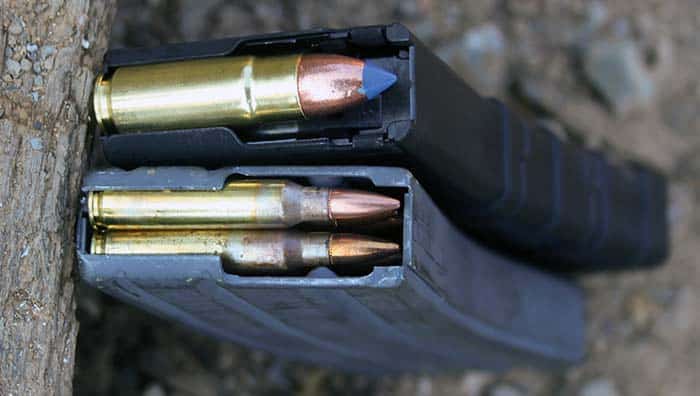
Alexander Arms decided to up the ante with the AR by going a different route—cartridge enhancement in the form of the .50 Beowulf cartridge. Alexander Arms’ 6.5 Grendel is another example of this. Reports from Afghanistan and Iraq have re-exposed that under certain conditions the 5.56mm performs poorly in putting an adversary down quickly with minimal rounds fired. This prompted a re-evaluation of how to enhance the AR platform with different chambering. The .50 Beowulf was introduced in 2001 by Alexander Arms. The last frontier with the AR is caliber expansion that fits within a standard 5.56mm lower receiver and uses a standard bolt group—with some modification. Though the 7.62x51mm/.308Win AR10 has been around for quite some time, the .308Win AR’s increase in size and weight in terms of necessary AR receiver sizes and other accessories to accommodate the larger cartridge is a drawback to many. This is where an AR chambered in the .50 Beowulf comes into the story. Alexander Arms decided to enter the AR fray only after thoroughly exploring the topic and by designing their ARs around new cartridges in an effort to expand the AR’s horizons.
The .50 Beowulf operates with bullet weights between 300 and 400 grains propelled between 1,800fps to 1,900fps depending on barrel length and bullet weight. The .50 Beowulf was specifically designed by Alexander Arms to generate unprecedented stopping power at short to moderate ranges out of the AR. For most .50 Beowulf loads, a 100-yard zero will give a relatively flat trajectory out to 150 yards; 100-yard zero will have the bullet offset less than a 1-inch low at 50 yards, zero at 100 yards, and dropping only 3.5 inches at 150 yards. Anecdotally, the .50 Beowulf can be thought of as a 45-70 Government in term of power. The .50 Beowulf’s heavy, large-diameter bullets and moderate velocities make it well-suited for hunting deer, hogs, black bear and similar-sized game that is found in woodlands or other thick cover situations. The .50 Beowulf’s terminal ballistics and large projectile can anchor most any animal found in North America.
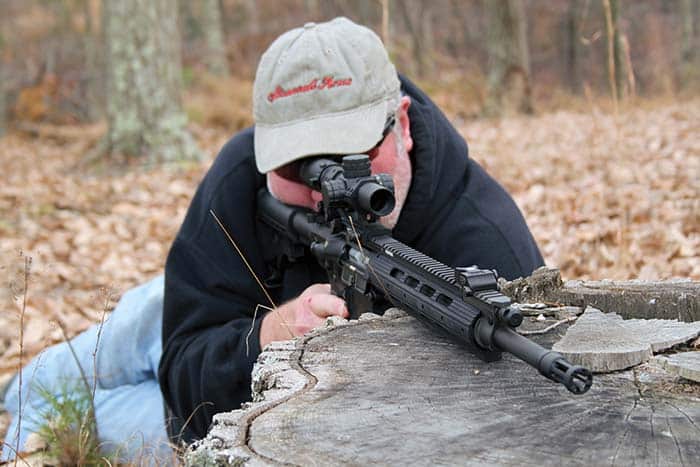
The Alexander Arms .50 Beowulf story does not end with the new cartridge. Bill Alexander insists that the rifles that bear his name be of the utmost quality in all aspects—material, assembly and design. Research for a previous article indicates that each rifle starts with a receiver manufactured by a company that specializes in aircraft engine parts. This industry’s quality control exceeds most due to zero tolerance of failure for obvious reasons. Another Alexander Arms manufacturing tweak is the barrel attachment method to the receiver. Over the years I have become convinced that a quality barrel is the best insurance for providing an accurate weapon. Alexander Arms feels the same way as they contract Lothar Walther for barrels. The .50 Beowulf is fed from 7- or 10-round magazines that share the same dimensions of standard 30-round AR magazines. .50 Beowulf AR magazines need the feed lips opened to accommodate the much larger .50 Beowulf cartridge and single-stack configuration of the .50 Beowulf round.
Alexander Arms’ other AR hunting option is chambered in the 6.5 Grendel. The 6.5 Grendel cartridge can have an entire article written on it. The 6.5 Grendel can be considered an intermediate cartridge falling between the 5.56mm and 7.62 NATO rounds, while maintaining use of the standard AR receiver size. The 6.5 Grendel case fits the bolt head of another Alexander Arms AR creation—the .50 Beowulf. The 6.5 Grendel was developed from the PPC benchrest family of cartridges (which traces lineage to the .220 Russian and eventually the 7.62×39) with modification to the shoulder and neck dimensions. It allows use of standard AR magazine bodies by switching out the followers. 5.56mm 30-round capacity is reduced to 26-round with the Grendel cartridge. The 6.5 Grendel can handle 80 to 144gr projectiles, but it performs best with bullets in the 100-123gr range. The 6.5 Grendel is no hot rod with velocities in the high 2,400-2,800fps range depending on bullet weight. However, it produces excellent down performance due to its high ballistic coefficient enabling retained down range velocity better than almost any other bullet diameter.

The urge to merge AR modularity, ergonomics, optics mounting and accuracy with heavier than 5.56mm cartridge has constantly appealed to the shooting community. CMMG has experience with this in the form of their highly successful Mk 47 Mutant 7.62×39 offering. (More on the Mutant later.) CMMG has upped the ante with their MkW ANVIL .458 SOCOM. The .458 SOCOM emerged from what started as informal discussions within the US Special Operation’s community after involvement in Somali. A set of initial requirements were set forth that shaped the design of the .458 SOCOM. The cartridge needed to fit in standard AR15 5.56mm magazines. The .458 SOCOM was specifically designed to generate unprecedented stopping power at short to moderate ranges out of the AR.
Upon testing, it was found that the .458 SOCOM not only lived up to the initial functionality requirements set forth, but also demonstrated ballistics to making it a viable caliber for a multitude of roles. There is a surprising variety of .458 SOCOM ammunition available from companies such as Corbon, Lehigh, Southern Ballistic Research (SBR), Underwood, Black Butterfly, Polycase and Venture Munitions. Bullet weights span 140 grain to 600 grain. The SBR-loaded Polycase 140 grain ARX reaches nearly 3,000 feet per second (fps), 300 grain loads 1800+fps, 400 grain 1600+ and 500-600 grain 1200-950 fps. Research indicates that the 300-400 grain loads are the “sweet spot” for the caliber with the most bullet load options. The 500-600 grain rounds are for suppressor use.
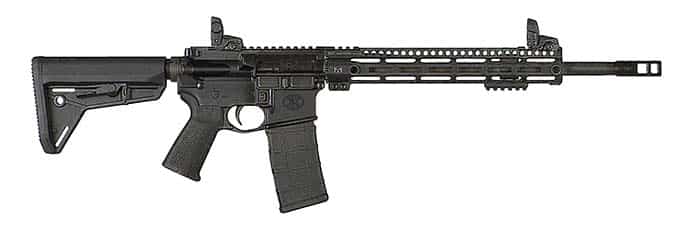
For 300-350 grain .458 SOCOM loads a 150-yard zero will give a relatively flat trajectory out to 200 yards; 150-yard zero will have the bullet offset less than 1 inch low at 50 yards, +2.5 inches at 100 yards and dropping 7 inches at 200 yards. The .458 SOCOM’s heavy, large-diameter bullets and moderate velocities make it well-suited for use in multiple arenas, including hunting. Shorter range has shared characteristics of each of listed roles. The .458 SOCOM’s terminal ballistics and large projectile have equal effect on engine block or large hog.
The CMMG Mk 47 Mutant product line immediately caught this hunter’s attention as something very worthy of exploration. Hunters know that the 7.62×39 cartridge mimics the hunting icon 30-30 in terms of ballistics. The CMMG Mk 47 Mutant offers true AR modularity, ergonomics, accuracy, optic adaptability, wide spread AK47 magazine compatibility—including drums—and lightweight svelte handling with 7.62×39 firepower. The 7.62×39’s trajectory is conducive to making hits out to 300 yards without having to resort to excessive hold over; 3 inches high at 100 yards produces a 200-yard zero with 15 inches low at 300 yards. The CMMG Mk 47 Mutant combined with a quality optic mated to quality ammunition in the form of the Hornady 123 grain SST is what many hunters have been waiting on.
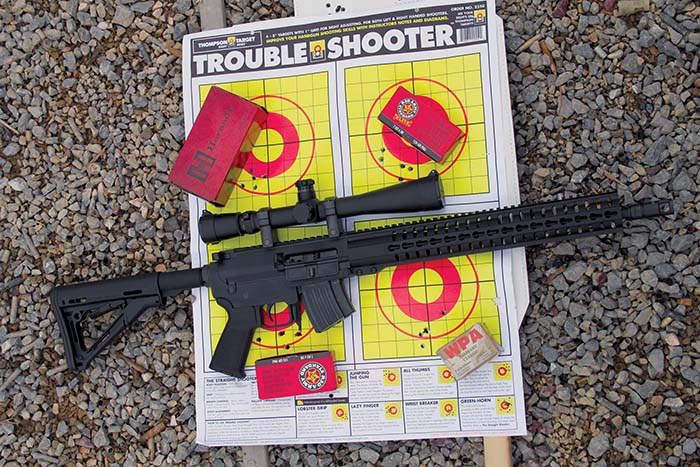
AR10 type rifles are the most obvious choice for hunting considering the .308Win chambering. The .308Win is an established hunting round in its own right. Sturm, Ruger & Company (Ruger) has taken its concept of the AR rifle another step forward with its SR-762 .308Win (SR25/AR10). The SR-762 is a short-stroke gas piston AR. Ruger decided to enter the fray only after thoroughly exploring the topic and by designing their version of a short-stroke, push rod, piston-driven system for the AR. Ruger describes its short-stroke piston as a two-stage affair eliminating the sharp pulse often associated with other piston ARs as the op-rod strikes the flat-faced carrier key located on the bolt carrier. This aids in faster follow up shots on game.
The Ruger’s decision to expand its AR model line up with the piston driven SR-762 is a valid one. While the SR-762 is not going to be issued to our military services, sportsmen will find the Ruger SR-762 appealing. The combining of the AR platform with the increased power represented in the .308Win cartridge is the key. This is speaking in terms of lethality and effective range, while still allowing for multiple rounds sent quickly downrange if needed.
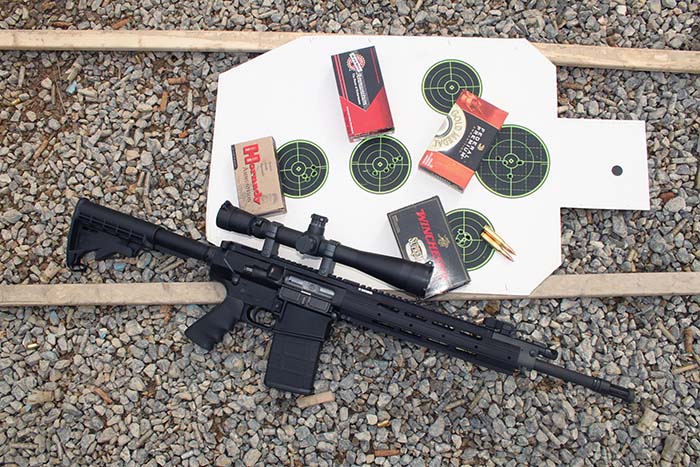
FN has taken its vision of the AR rifle another step forward with its new ARs chambered in .300Blackout (.300BLK). It is not unusual to see military pattern weapons embraced by hunters. This pattern can be discerned ala Trapdoor, Springfield 1903, etc. Why not take advantage of the time and effort expended by various nations’ armed forces in doing the initial leg work of what works in terms of reliability and effectiveness. This is not to say military weapons are to be blindly followed; just that millions of dollars and countless hours of research and development should not be ignored as a starting place.
The .300 Blackout (.300BLK) is emerging as one of the most successful alternate AR chamberings. Literature describes the goal of the .300BLK as being the ability to launch .30 caliber projectiles from the AR platform using existing 5.56mm magazines without a reduction in magazine capacity or reliable functioning. Another notable characteristic of the .300BLK is its compatibility with the AR standard bolt; thus only a barrel change is necessary. Anecdotal information compares standard velocity .300BLK 115-125 grain ammunition as matching the ballistics of the 7.62x39mm AK and eclipses 5.56mm both in ballistics and terminal punch. At 300 yards, the .300BLK has approximately 17 percent more energy than the 7.62x39mm. There is a wide variety of ammunition available for the .300BLK. A favorite for hunting would be the SIG SAUER Elite HT 120 grain Solid Copper load.
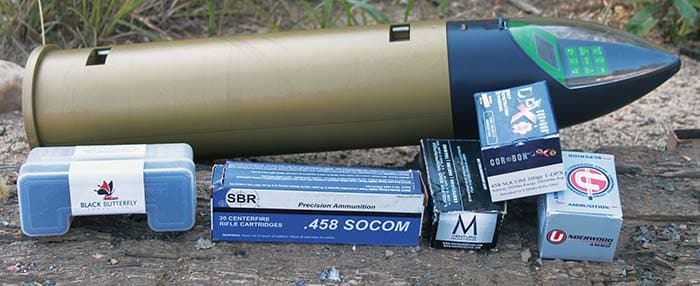
The same FN quality and attention to detail in providing accurate, rugged and reliable weapons such as the M249 and M240 belt-fed machineguns, both examples of other FN designs, were turned toward their AR product line-up. Even though FN America has been making AR pattern rifles for decades here in the US, introduction of a civilian AR product line is new. The FN 15 Tactical’s tale of the tape indicates a 6.6 pound weight and measurements of 33.7 and 37 inches depending on stock adjustment. The FN 15 Tactical is one of the lighter AR versions on the market, especially considering that it features a full-length rail and 16-inch barrel, weighing less than 7 pounds. The FN 15 Tactical shows versatility in satisfying customer needs by not using full-length quad rails, but instead a lower profile handguard in the form of the Midwest LWM. The LWM handguard minimizes weight and contributes to the excellent balance of the FN 15 Tactical. Some full-length rails cause a front heavy feel. This is important for any rifle intended to be used for hunting.
Hunters should not automatically dismiss AR rifles as valid hunting options. Any sneers or jeers received at deer camp can be handled with an explanation of the different calibers available along with describing the accuracy and firepower of which ARs are capable.
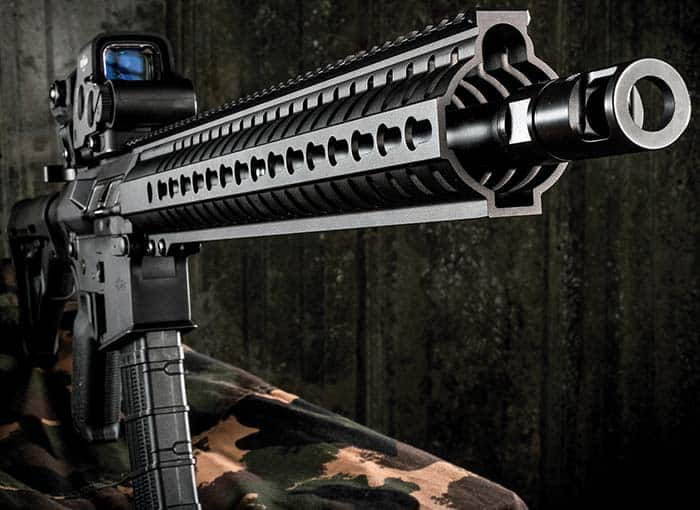
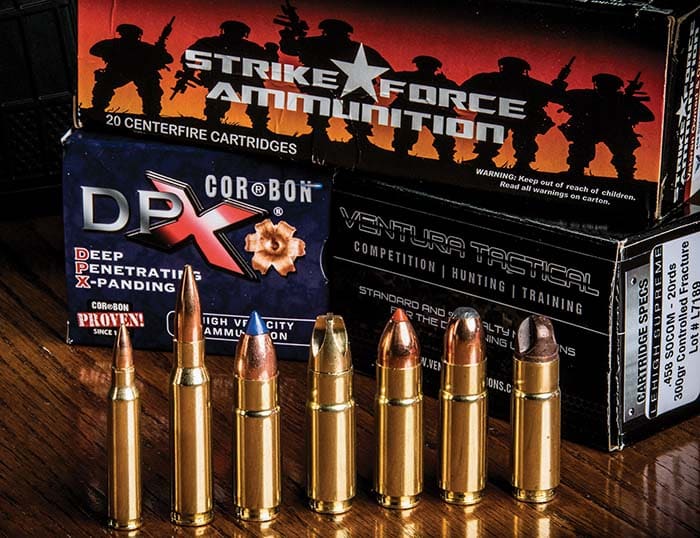
SITES OF INTEREST
Alexander Arms www.alexanderarms.com
CMMG www.cmmginc.com
Sturm, Ruger & Co., Inc. www.ruger.com
FN www.fnamerica.com
| This article first appeared in Small Arms Review V21N6 (July 2017) |












